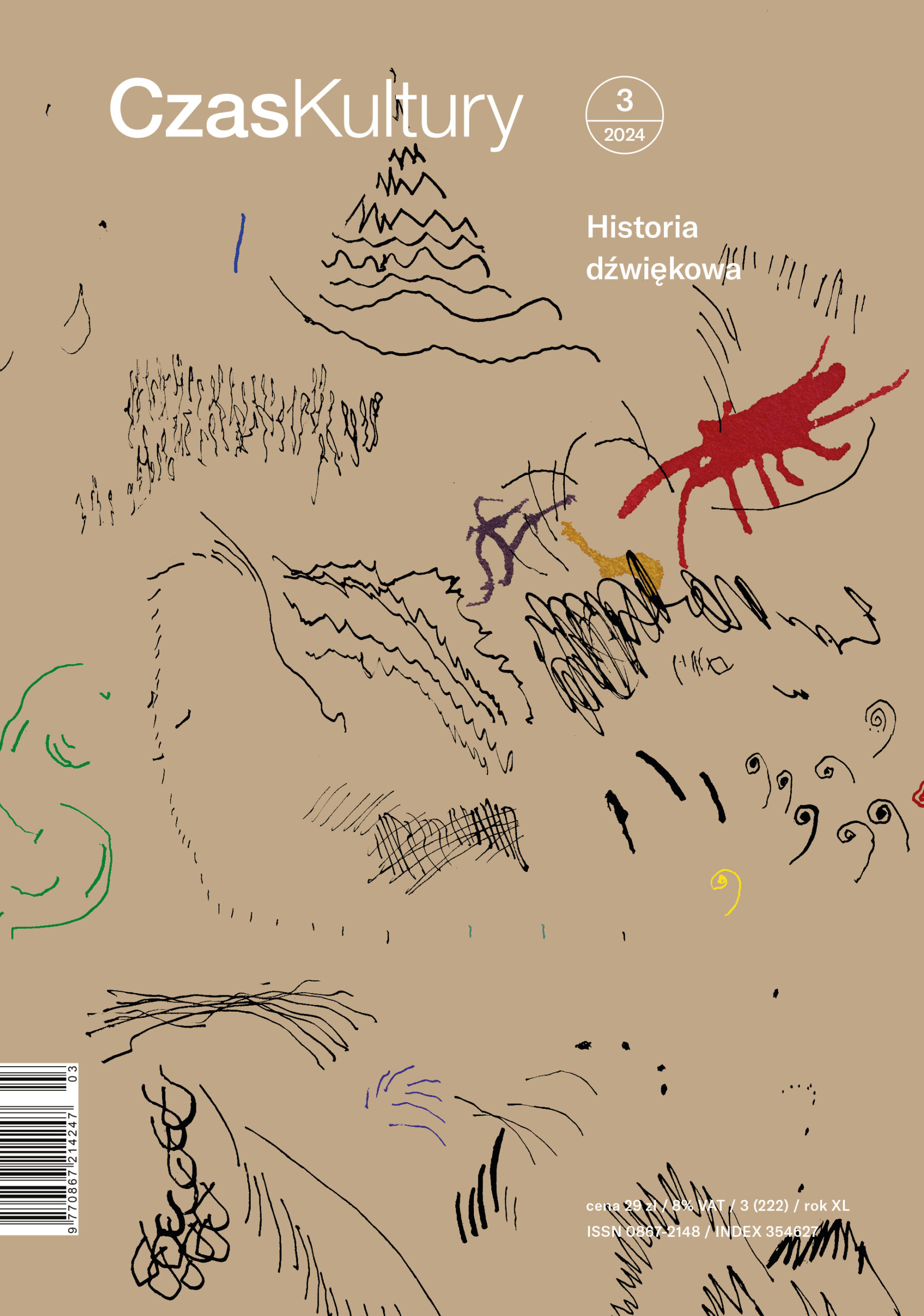DOI: https://doi.org/10.61269/VVJF1996
vol. XL, no. 3, 2024
Dźwiękowe emanacje oporu i strategie przetrwania w Litzmannstadt Ghetto
Bartosz Nowicki
ORCID: 0009-0009-1622-6630
Zakres stron: 68–79
Abstrakt:
Dźwiękowe emanacje oporu i strategie przetrwania w Litzmannstadt Ghetto
Historia powstania i działalności getta łódzkiego to opowieść o eskalacji technik terroru. W skład struktury represji wchodziły między innymi izolacja, głód, niewolnicza praca, prześladowania na tle osobistym, kulturowym i religijnym, a także działania umacniające rozwarstwienie społeczne i materialne. Na tym tle szczególnego znaczenia nabierają praktyki oporu o charakterze akustycznym – jedne z niewielu form sprzeciwu zdolnych prześliznąć się przez gęstą sieć opresji. Do dźwiękowych strategii przetrwania można zaliczyć z jednej strony twórczość artystyczną czy śpiew towarzyszący pracy, strajkom i zgromadzeniom opozycji, z drugiej – praktyki zapewniające przeżycie kolejnego dnia: celowe zachowywanie ciszy, nasłuchiwanie radia czy tajne systemy komunikacji między ukrywającymi się. Artykuł obrazuje wielopłaszczyznowość oporu podejmowanego przez osoby osadzone w getcie, akcentując znaczenie strategii dźwiękowych – pomijanych dotąd w studiach nad Zagładą.
Słowa kluczowe: audiosfera Zagłady, historia dźwiękowa, holokaust, getto łódzkie, sound studies
Abstract:
Sound Emanations of Resistance and Survival Strategies in the Litzmannstadt Ghetto
The history of the creation and activities of the Lodz Ghetto is a tale of escalating terror techniques. The structure of repression included isolation, starvation, slave labor, persecution on personal, cultural and religious grounds, as well as measures that reinforced social and material stratification. Against this background, practices of resistance of an acoustic nature – one of the few forms of resistance that could slip through the dense web of oppression – take on particular significance. Acoustic strategies of survival include, on the one hand, artistic creation or singing during work, strikes and opposition gatherings, and on the other, practices that ensured survival: deliberate silence, listening to the radio, or secret communication systems between those in hiding. The article illustrates the multifaceted nature of the resistance undertaken by those imprisoned in the ghetto, emphasizing the importance of sound strategies – hitherto overlooked in Holocaust studies.
Keywords: Holocaust audiosphere, sound history, holocaust, Lodz ghetto, sound studies
0,00zł



